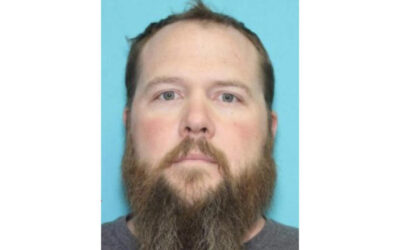
. . . There are currently 25 states with constitutional carry. When there were only 13–Alaska, Arizona, Arkansas, Idaho, Kansas, Kentucky, Maine, Mississippi, Missouri, New Hampshire, North Dakota, West Virginia, and Wyoming–the Crime Prevention Research Center (CPRC) showed that data from the 13 states showed overall murder numbers fell from 4.49 to 4.31 post-constitutional carry enactment, and that violent crime fell from 331.5 to 318.2.
But murder levels can vary for a variety of reasons, and CPRC’s John Lott explains some of the numerous factors that are often at play:
Firearm homicide is not a good measure of the effect of Constitutional Carry laws because murders can be committed with other weapons as well as by hands and fists. Also, gun homicide data include justifiable homicides, including homicides by police in the line of duty. Justifiable homicides are benefits, not costs, and they might understandably increase when more citizens are allowed to defend themselves with guns. The FBI murder rate has neither of these problems and is a better test of the effect of constitutional carry laws. Nevertheless, my analysis finds that Constitutional Carry laws do not increase firearm homicide.
It should also be noted that Lott points out that constitutional carry helps to make the poor safer, by making self-defense affordable.
Lott adds:
Constitutional Carry will make it easier for poor people, who are the most likely victims of violent crime, to be able to defend themselves and their families. Costs matter; just compare the numbers in neighboring states, Illinois and Indiana. In Illinois, the total cost of getting a five-year permit is $450; there is no license fee in Indiana. While only 4% of Illinoisans have a concealed handgun permit, 22% of adults in Indiana already have one, the second-highest number of permits per capita.
Newsom’s claim is partly false.
AWR Hawkins, “FACT CHECK: Gavin Newsom Says ‘Permitless Carry Does Not Make You Safer’,” Breitbart, February 1, 2023.

Crime Prevention Research Center’s John Lott spoke to Breitbart News about the impact concealed carry has on crime and he noted, “The majority of peer-reviewed published studies show that the states that issue the most concealed handgun permits have the biggest drops in violent crime.”
AWR Hawkins, “Gavin Newsom Responds to Mass Shootings by Limiting Concealed Carry,” Breitbart, February 2, 2023.

Economist John Lott Jr., a former visiting professor and fellow at the University of Chicago, recently spoke at an event hosted by the Federalist Society at the UChicago Law School. Now the president of the Crime Prevention Research Center, Lott argued that gun control legislation is ineffective in combatting violent crimes and that its poor implementation has inadvertently harmed the country’s most vulnerable populations.
The first portion of Dr. Lott’s presentation framed the importance of his research. “We know that violent crime has soared in the United States over the last couple of years,” asserted Lott, “and it’s not really a mystery what has happened.”
One explanation for why violent crime has risen is that large cities across the country cut police funding in 2020. New York moved to drop roughly $1 billion from its police budget that year; in Los Angeles, San Francisco, and Washington, D.C., the figures were $150 million, $120 million, and $15 million, respectively.
An additional explanation that Lott proffered for rising crime is that district attorneys like Chicago’s Kim Foxx have neglected their duties by refusing to prosecute violent criminals. He cited the 2021 West Side shootout, after which Foxx refrained from pressing charges despite high-definition video footage nailing the perpetrators.
Moreover, bail reform has allowed seasoned offenders like Waukesha Christmas parade attacker Darrell Brooks Jr. to be released from custody even with a rapsheet fraught with felony charges.
Like Politics, Is All Crime Local?
In the second portion of the event, Dr. Lott focused on the negative effects that crime has on communities: Violence against the social fabric, simply stated, transcends individual victims. For instance, the frequent concentration of crimes in areas predominantly populated by minorities carries external effects, like rendering the local business climate more risky, eliminating potential job opportunities, and decreasing property values.
Illustrating empirically the dense concentration of American crime, Lott observed that the worst 1% of counties (31 total) contained 21% of the nation’s population but accounted for 42% of the murders. Shockingly, the most violent 2% of counties contained 31% of the population but had 56% of the murders.
Cook County, encompassing Chicago, was the worst county in the nation with 775 murders that year.
The Discriminatory Effect of Gun Laws
Lott devoted the last portion of his lecture to firearm ownership data and the fallacies behind background check laws.
Highlighting the demographic trends of gun ownership, Lott’s slide deck claimed that in the last eight years, the growth of permits for women was 109 percent faster than that of men and the growth of permits for blacks was 136 percent faster than that of whites.
Additionally, in Texas, the largest percentage increases in gun ownership from 2000 to 2020 were from minority women. Lott’s explanation for that trend is that the most vulnerable demographics with respect to crime are physically weaker people (i.e., women and the elderly, generally speaking) and poor minorities.
In light of these data showing that minorities and women are leaping at the chance to own firearms, Lott asserted that current policies relating to gun control and background checks are flawed at best and purely nonsensical at worst.
“When you buy a gun, you fill out something called a 4473 where you put down your name, your address, your birthday. . . . And you think they’re going to use all this information,” noted Lott. “But what they actually use is roughly phonetically similar names and similar birthdays.” That results in an abundance of “false denials,” i.e., the rejection of people with a clean background.
The more felons who have a name similar to yours, the more likely it is you will be denied a firearm. And as Lott explains, proportionally uneven felony rates across different demographics mean a disproportionate number of false denials between different races.
According to Lott, the most consequential result of that background-check flaw is that the most vulnerable populations—minorities living in minority-heavy urban areas—are more likely to be denied the firearm with which they could protect themselves and their families. Hence, gun control laws designed to reduce violent crime have actually exacerbated the issue.
Lott received his Ph.D. in economics from the University of California, Los Angeles; served as a visiting professor and fellow at the UChicago Law School in the 1990s; and published his most famous book, More Guns, Less Crime in 1998. His work is not uncontroversial: Mark Spies writes, for instance, that “Lott’s findings and methods have generated scathing criticism from prominent academics, who have questioned his veracity and exposed flaws in his work.”
Perry Zhao, “Gun Control Laws Box Out Minorites, John Lott Argues at UChicago Law Federalist Society Event,” Chicago Thinker, February 1, 2023.

The book “More guns, less crime” is one of many studies that show in painstaking detail how areas with concealed carry laws have lower crime rates. . . .
Eric Golub, “State of the Union 2023: Biden’s Build Back Blather,” The Jewish Journal, February 8, 2023

Members of the Florida Sheriffs Association made an appearance Monday to lobby their organization’s support for the bill. According to a report published by the Crime Prevention Research Center, Florida is the state with the most concealed carry permit holders in the nation with 2.57 million. . . .
“Considering the elimination of concealed weapons permits in Florida,” Historic City News, February 1, 2023.

The president of the Crime Prevention Research Center, John Lott, said California is “making it very difficult” for law enforcement to do its job and for individuals to protect themselves. In an email to the Sun, Mr. Lott said California’s “list of ‘protecting citizens’ rights’ is missing an extremely important one: people’s right to self-defense.” . . .
Matthew Rice, “States Scrambling To Outmaneuver Supreme Court on Guns,” The New York Sun, January 19, 2023.

“President Biden and Democrats want to talk about violent crime as a gun problem. Over 92% of violent crime has nothing to do with guns,” said John Lott Jr., former president of the Crime Prevention Research Center. “The way you reduce violent crime or gun crime is the same way: You have to make it risky to go and commit the crime.” . . .
Michael Dorstewitz, “Netanyahu Gets It Right on Guns, US Should Follow His Lead,” NewsMax, February 1, 2023.

Homicide rates are spiking, but only in select districts. Another study by John Lott, the president of the Crime Prevention Research Center, shows that the worst 5 percent of U.S. counties accounted for 73 percent of homicides.
“Murder isn’t a nationwide problem,” Lott wrote. “It’s a problem in a small set of urban areas, and even in those counties, murders are concentrated in small areas inside them, and any solution must reduce those murders.” Therefore, assault weapons bans and similar solutions will do little to reduce violent crime. As Lott has demonstrated, the counties with the highest homicide rates already have low gun ownership. To truly fix the nation’s homicide problem, Americans need to focus on the problems in the urban warzones where homicides are occurring. . . .
Andrew Miller, “12 U.S. Cities Are Among the 50 Most Dangerous Cities in the World,” The Trumpet, February 1, 2023.

An excellent example of this is provided by recent research on the US murder rate by the Crime Prevention Research Center, and its president, John R. Lott Jr., whom I have known since we overlapped many years ago in the UCLA Economics PhD program. I would note that John’s work is often controversial, which also makes him a frequent subject of ad hominem attacks, because the empirical data he develops can strongly contradict what others are “selling” as the truth in some area, particularly with regard to crime. However, I have never seen him abuse logic and statistics to get a particular answer he set out to find (or was paid to, as many “researchers” are). His focus, which strongly reminds me of the work of Harold Demsetz, who taught both of us, is on designing empirical tests to differentiate among alternative explanations, then following where the evidence leads, rather than torturing evidence to create the “right” wrong answer.
Increases in homicide rates tend to be treated by state and federal politicians as if they are broadly distributed national problems to scare Americans into supporting overly broad-brush “solutions.” But Lott’s research shows instead that “homicide rates have spiked, but most of America has remained untouched.” Or as David Strom summarized the results, “There are vast swathes of the country where violent crime is very, very rare, and small areas of the country where it is common.” If that is true, we should focus our attention on those small areas, not on national policies poorly focused on where the actual problems are most severe.
Lott’s research, which used 2020 homicide data, examined the concentration of homicides in particular areas to see whether America’s increasing homicide problem is national or local. He let that data tell its story.
First, he focused on county-level data rather than national data. Some of the dramatic results he found:
— The worst five counties (Cook, Los Angeles, Harris, Philadelphia, and New York) accounted for about 15 percent of homicides.
— The worst 1 percent of counties (31), with 21 percent of the US population, accounted for 42 percent of the homicides.
— The worst 2 percent of counties (62), with 31 percent of the population, accounted for 56 percent of the homicides.
— The worst 5 percent of counties (155), with 47 percent of the population, accounted for 73 percent of the homicides.
In contrast, over half of US counties (52 percent) had zero homicides in 2020, and roughly one-sixth of the counties (16 percent) had only one.
Continuing his investigation, Lott looked at even finer-scale zip code data for Los Angeles County. He found that the worst 10 percent of zip codes in the county accounted for 41 percent of the homicides, and the worst 20 percent accounted for a total of 67 percent of the homicides.
From such data, Lott concluded that: “Murder isn’t a nationwide problem.” Instead, “It’s a problem in a small set of urban areas, and even in those counties murders are concentrated in small areas inside them, and any solution must reduce those murders.” . . .
Gary M. Gales, “Concentrate Where the Murders Are Concentrated,” The Independent Institute, January 30, 2023.

Unfortunately, “The Rookie” isn’t the only show trying to portray lawfully armed citizens as a problem in society. “Law & Order,” “Blue Bloods,” “FBI: Most Wanted,” and other shows have recently labeled armed citizens as “vigilantes” and “idiots,” or contrived a plot that involves an armed citizen making matters worse.
“[T]elevision shows have begun to demonize concealed-carry permits,” wrote Dr. John Lott, founder of the Crime Prevention Research Center (CPRC).
Data from the CPRC shows that more-than-21-milllion Americans carry concealed, and that these individuals are among the most-law-abiding citizens in the country. . . .
Garrett O’Leary, “Hollywood Gets It Wrong, Again,” America’s 1st Freedom, February 5, 2023.

“Crime is up a lot from where it was a couple of years ago,” Dr. John Lott, head of the Crime Prevention Research Center, said in an exclusive interview with America’s 1st Freedom. “And we really don’t have a good measure for what happened in violent crime in 2021 because about 40% of the police departments in the country—many of them are among the largest police departments in the country, such as New York City and Los Angeles—are not reporting crime data to the FBI.
“It’s not like these cities aren’t collecting this data, they’re just not turning it over to the FBI. Part of the reason for this is political. Part of it is the fact that crime has gone up so much in some places that by not reporting it to the FBI, they can then sort of hide how bad the crime increase might be in certain areas.” . . .
“Today, Americans are often being misinformed about what causes crime and how you stop it—and how effective individuals are at being able to stop it,” says Lott, who keeps a running tally of mass-murderers who are stopped by armed citizens on his website (crimeresearch.org). . . .
“President Biden doesn’t seem to understand that armed, law-abiding citizens make it riskier for criminals to commit crime,” said Lott. “Biden never seems to grasp the value of deterrence. He hasn’t criticized the progressive prosecutors who refuse to prosecute violent criminals, the judges who have released large numbers of inmates from jails or the bail-reform measures that immediately put violent criminals back on the street. Instead, he blames armed citizens for crimes committed by criminals who, by the way, almost always have illegally obtained guns.” . . .
Mark Chesnut, “Gun Owners Aren’t to Blame For Surging Violent Crime,” America’s 1st Freedom, January 31, 2023.

Gun control advocates, in addition to attempting to prove that gun laws reduce violence, work hard to minimize John Lott’s research with its solid support for “More Guns, Less Crime” . . .
Gary Mauser, Alan Chwick, and Joanne Eisen, “Are Civilian Owned Guns A Benefit to Society? Researchers Have No Clue?” Ammoland, February 3, 2023.

“Murders in US Are very concentrated, and they are becoming even more so,” a new paper by economist and author John Lott of the Crime Prevention Research Center demonstrates. “Most counties experience no murders, a smaller set where there are a few murders, and then a tiny set of counties where murders are very common.”
“Murder isn’t a nationwide problem. It’s a problem in a small set of urban areas, and even in those counties, murders are concentrated in small areas inside them, and any solution must reduce those murders,” Lott concludes. . . .
David Codrea, “Homicide Data Show No Justification for Blanket Citizen Disarmament,” Ammoland, January 31, 2023.





0 Comments